《Head First Python》笔记 第六章 定制数据对象
2013-04-05 21:12
846 查看
6. Custom Data Objects: Bundling code with Data
将要处理的数据如下:Sarah Sweeney,2002-6-17,2:58,2.58,2:39,2-25,2-55,2:54,2.18,2:55,2:55,2:22,2-21,2.22
第一个逗号前为姓名,第二个为生日,后面为时间,目的:抽取3个最快时间。
用前面章节的内容实现:

pop()方法从指定的列表位置删除并返回一个数据项。
Use a dictionary to associate data
Dictionary(a built-in data structure)类似于Java中的Map,提供键值对方式存储数据。创建dictionary方式:
创建空字典(两种方式):
元素可以在初始化的时候添加,也可以直接添加(不先创建空字典),可动态扩大:
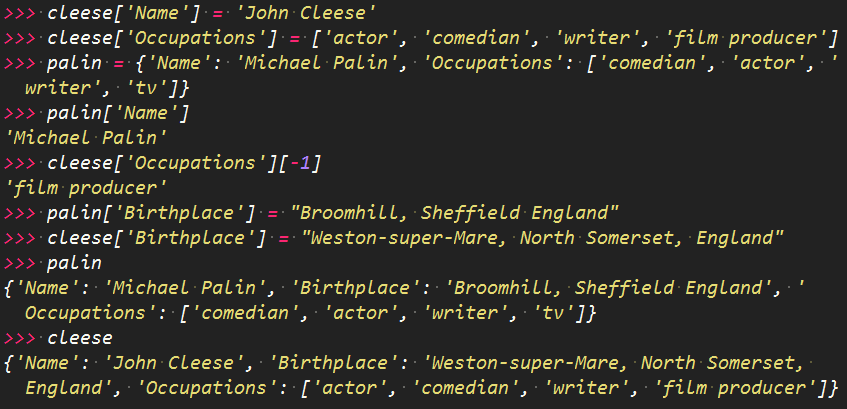
与list不一样,dictionary不会维持插入的顺序,重点是它会维护关联关系,而不是顺序。
修改开头的代码:
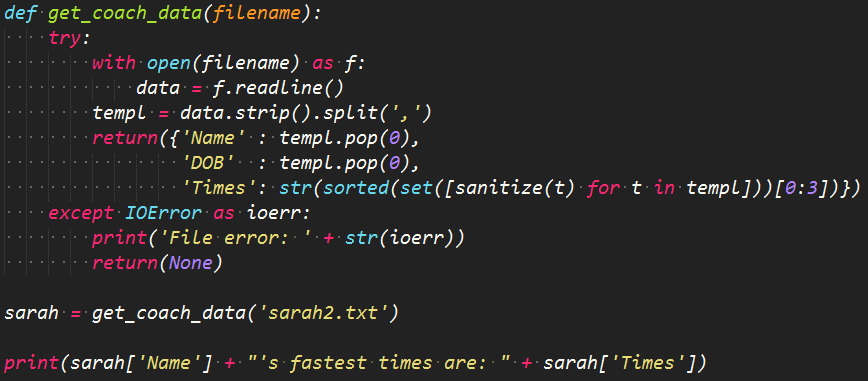
Bundle your code and its data in a class
跟其它语言的类一个意思Python uses
classto create objects. Every defined class has a special method called
__init__(), which allows you to control how objects are initialized:
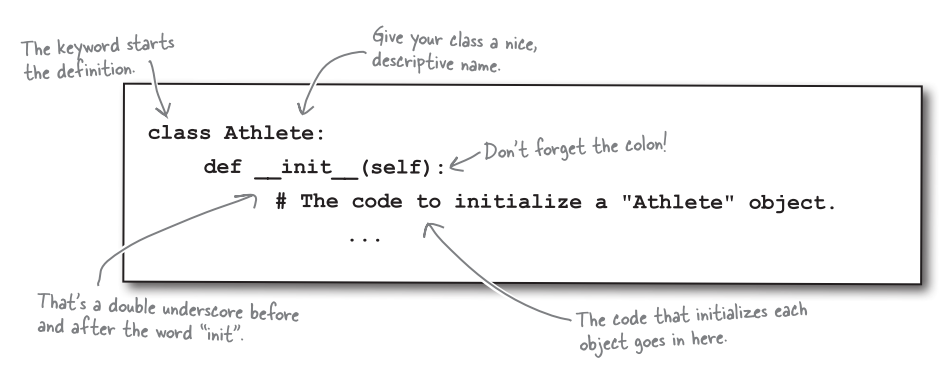
创建类的对象实例(没有“new”):
a = Athlete()
将会转换为调用init方法(a为对象实例的目标标识符):
Athlete().__init__(a)
The target identifer is assigned to the self argument.
Every method's first argument is self
类中定义的每个方法都必须提供self(总是指向当前对象实例)作为第一个参数。扩展Athlete类:
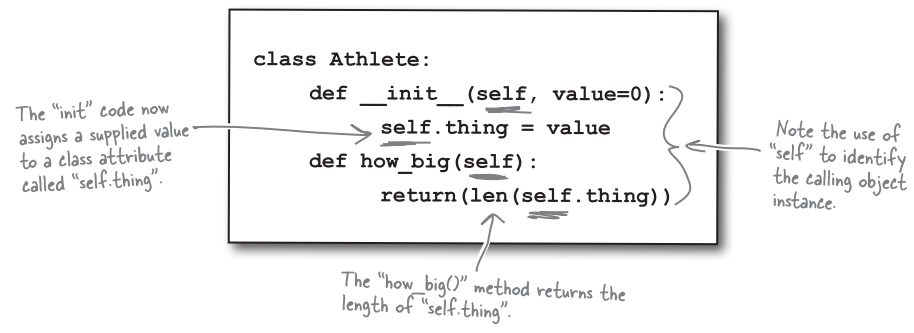
使用:

下面是个例子:

类定义后,属性可以动态添加,但是不能对不存在的属性进行访问:

将使用字典修改为使用类:

Inherit from Python’s built-in list
Python中的类可以继承build-in类,也可以继承自定义的类。Python支持多重继承。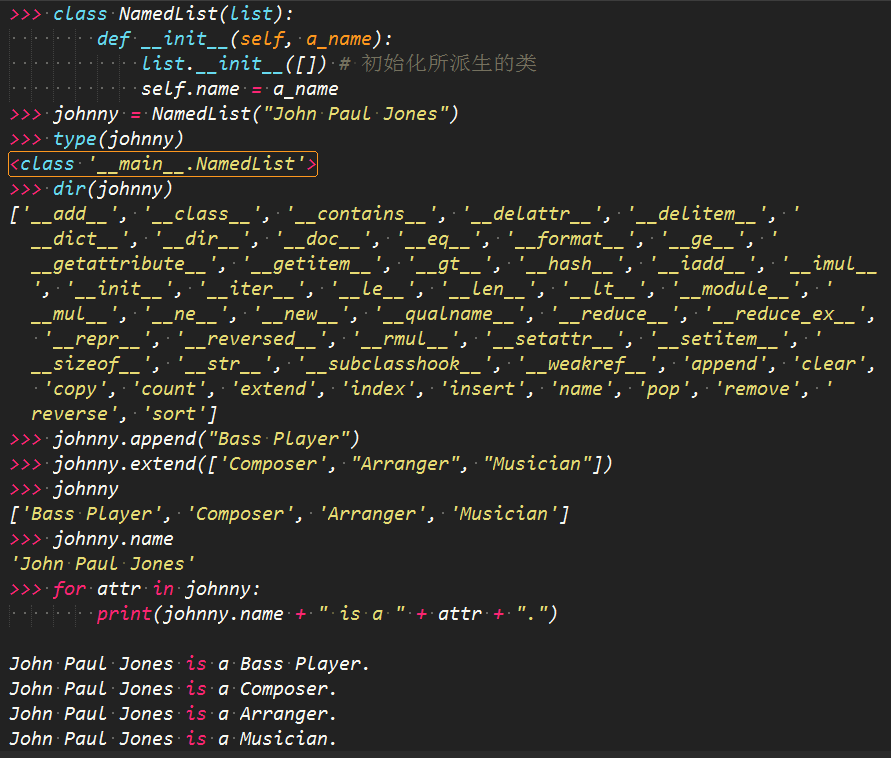
修改Athlete类继承自list:

if you save your AthleteList class to a file called athletelist.py, you can import the into your code using this line of code:
from athletelist import AthleteList
跟模块中函数的导入一样:
from module import function from module import class
相关文章推荐
- 【Head First Python-第六章-定制数据对象】学习笔记
- HeadFirstPython---------(四)第六章(定制数据对象__打包代码与数据)
- Head First Python 学习笔记-Chapter6:自定义数据对象:字典与类
- Head First Python ch_6 定制数据对象
- Head Frist Python 读书笔记 第六章 定制数据对象
- [Head First Python]6. 定制数据对象:打包代码与数据
- Head First Python(定制数据对象)
- 《head first python》——定制数据对象
- Python学习笔记_Chapter 6定制数据对象
- Python初入门(六)(Head First Python 第六章 打包代码与数据 ,字典,类与继承)
- Head First Python 学习笔记-Chapter4:持久化--将数据写入文件
- 阿齐兹的Python学习笔记——定制数据对象
- 《Head First Python》笔记 第九章 管理你的数据
- 《Head First Python》笔记 第三章 文件与异常
- Head First Python (中文)学习笔记-第6章
- <Head First Java>学习笔记--第二章:类与对象
- cgi.FieldStorage()获取网页间提交的数据《Head First Python》第七章
- 学习笔记-Python分册-Head First Python学习随记-错误汇总
- Head_First_Python学习笔记(二)
- HeadFirstC笔记_6 数据结构与动态存储:牵线搭桥
